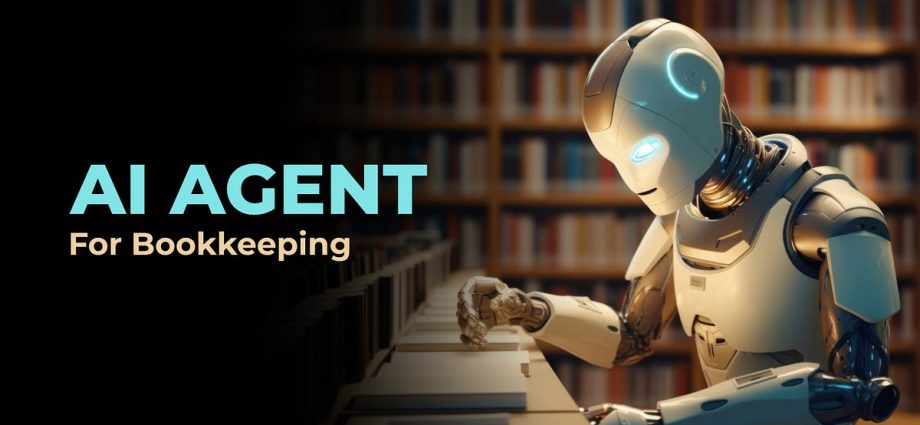In the ever-evolving landscape of business automation, bookkeeping is one area that has seen rapid advancements. Manual entry, paper receipts, and spreadsheets are increasingly becoming outdated, replaced by intelligent systems designed to streamline and automate financial tasks. One such innovation is the AI Bookkeeping Agent — a smart solution to manage your business’s accounting with minimal human intervention.
This blog will explore everything you need to know to build a smart AI Bookkeeping Agent for your business, covering the benefits, technology stack, development steps, and implementation strategies. Whether you’re a startup, a small business, or an enterprise, integrating AI into your financial processes can save time, reduce errors, and optimize resources.
What is an AI Bookkeeping Agent?
An AI Bookkeeping Agent is an artificial intelligence-powered software that automates financial data entry, categorizes expenses, generates reports, reconciles accounts, and ensures compliance with financial regulations. These agents leverage machine learning, natural language processing (NLP), and robotic process automation (RPA) to handle repetitive and complex bookkeeping tasks.
Unlike traditional accounting software, an AI Bookkeeping Agent doesn’t just store and process numbers — it learns from historical data and improves over time, providing smarter insights and recommendations.
Benefits of Using an AI Bookkeeping Agent
Before diving into AI Bookkeeping Agent Development, it’s essential to understand the advantages of deploying such a solution:
Automation of Repetitive Tasks: Eliminates the need for manual data entry and categorization.
Real-time Insights: Provides up-to-the-minute financial data and analysis.
Error Reduction: Minimizes human errors in accounting.
Scalability: Easily scales with business growth without the need to hire more accountants.
Cost Efficiency: Reduces labor costs and overheads.
Regulatory Compliance: Helps stay compliant with financial regulations through continuous monitoring.
Key Features of an AI Bookkeeping Agent
To build an AI Bookkeeping Agent that delivers true value, it should include the following features:
Automated Data Entry: Captures and records financial details from receipts, invoices, and bank statements with minimal manual effort.
Transaction Sorting: Utilizes machine learning to automatically classify expenses by category.
Bank Reconciliation: Matches internal records with bank statements.
Financial Reporting: Produces balance sheets, profit and loss statements, and cash flow summaries.
Tax Calculation: Estimates taxes owed and prepares returns.
Compliance Monitoring: Flags anomalies and potential regulatory issues.
Integrations: Connects with banks, CRMs, and ERP systems.
Smart Notifications: Alerts for unusual transactions or payment deadlines.
User Permissions and Audit Trails: Ensures security and transparency.
Natural Language Interface: Enables query-based financial questions using NLP.
Step-by-Step Guide to Build AI Bookkeeping Agent
Let’s break down how to develop an AI Bookkeeping Agent for your business:
Step 1: Define Your Requirements
Start by identifying your business’s bookkeeping challenges and goals. Do you need expense tracking, payroll integration, or real-time reporting? Mapping out specific requirements will shape the architecture and capabilities of your AI agent.
Step 2: Choose the Right Tech Stack
An AI Bookkeeping Agent relies on a blend of technologies:
Programming Languages: Python, JavaScript
Machine Learning Libraries: TensorFlow, PyTorch, Scikit-learn
NLP Tools: spaCy, NLTK, GPT-based APIs
Databases: PostgreSQL, MongoDB
Cloud Platforms: AWS, Google Cloud, Azure
Automation Tools: Zapier, Apache Airflow, UiPath
APIs for Integrations: Plaid (banking), QuickBooks, Stripe
Step 3: Data Collection & Preprocessing
Collect financial data like past invoices, bank statements, receipts, and categorize them. Clean and structure this data for training your machine learning models. Data quality directly impacts the AI agent’s accuracy.
Step 4: Build Core Machine Learning Models
Use historical data to train models that can:




Train, validate, and iterate your models using relevant datasets.
Step 5: Design the Workflow Engine
Develop workflows for handling tasks like:




This logic serves as the core intelligence behind your AI Bookkeeping Agent Development.
Step 6: Build the User Interface
Design a dashboard where users can:




Utilize frameworks such as React or Vue.js to build a responsive and dynamic user interface.
Step 7: Implement Integrations
To make your AI agent truly powerful, integrate it with:




Step 8: Test and Deploy
Test your agent in real-world scenarios. Run simulations and audits to ensure accuracy. Once refined, deploy your AI agent on a secure cloud infrastructure with proper encryption and access controls.
Tips to Optimize Your AI Bookkeeping Agent
Continuously Feed Data: More data improves prediction accuracy.
Add Feedback Loops: Let users correct errors, which improves the model.
Audit Logs: Keep track of every action for transparency.
Set Permissions: Restrict access based on roles.
Use Pre-trained Models: For NLP and categorization to speed up development.
Use Cases Across Industries
AI Bookkeeping Agents aren’t limited to any one sector. Here’s how they’re used:
E-commerce: Auto-tracking of expenses and sales channels.
Freelancers: Simplified invoice and tax management.
SMBs: Real-time expense management and payroll.
Startups: Managing investor reports and burn rates.
Nonprofits: Monitoring fund allocations and donor contributions.
Future of AI Bookkeeping Agent Development
As AI matures, so will bookkeeping agents. Here’s what the future may hold:
Voice-Powered Accounting: Use voice commands to generate reports.
Predictive Financial Planning: Suggest budgets and forecast trends.
Blockchain Integration: For immutable audit trails.
Autonomous Filing: AI will file taxes and reports with minimal input.
Multi-language Support: Use NLP to support global businesses.
Conclusion
Building an AI Bookkeeping Agent isn’t just a trend — it’s a strategic move to modernize your business’s financial operations. From reducing manual work and human error to offering real-time insights and intelligent automation, the benefits are substantial.
To build an AI Bookkeeping Agent, you’ll need to bring together the right mix of technologies, data strategies, and user-focused design. The investment in AI Bookkeeping Agent Development today can lead to major cost and time savings tomorrow.
Whether you’re aiming to develop an AI Bookkeeping Agent in-house or planning to hire a development partner, now is the time to embrace AI-driven finance and stay ahead of the competition.



